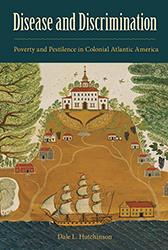Assessing sites both submerged and on land, the authors explore the maritime history of the isthmus through its many stages: from its prehistoric period through Spanish colonialism to the building of the canal and its function as a route for modern-day maritime traffic.
Browse by Subject: Anthropology and Archaeology
Please note that while you may order forthcoming books at any time, they will not be available for shipment until shortly before publication date
Ritual and archaic states frequently ignite complex debates about their defining characteristics and archaeological signatures. Offering fresh perspectives on both subjects, this volume unites the two streams of scholarship and explores the varying nature, expression, and significance of ritual in archaic states.
Using extensive field research, Alconini explores the modes of direct contact between the Inkas and eastern tropical Lowland populations, a situation often overlooked in studies of the area. Combining both regional- and household-level perspectives, she explores the empire's impact on local settlements as well as on domestic economy, production, cultural materials, and labor organization.
The Powhatan Landscape breaks new ground by tracing Native placemaking in the Chesapeake from the Algonquian arrival to the Powhatan's clashes with the English. Martin Gallivan details how Virginia Algonquians constructed riverine communities alongside fishing grounds and collective burials and later within horticultural towns. Ceremonial spaces, including earthwork enclosures within the center place of Werowocomoco, gathered people for centuries prior to 1607. Even after the violent ruptures of the colonial era, Native people returned to riverine towns for pilgrimages commemorating the enduring power of place.
The Cold War was one of the twentieth century's defining events, with long-lasting political, social, and material implications. It created a global landscape of culturally and politically significant artifacts and sites that are critical to understanding and preserving the history of that conflict. The stories of these artifacts and sites remain mostly untold, however, because so many of the facilities operated in secret.
The late Pleistocene-early Holocene landscape hosted more species and greater numbers of them in the Southeast compared to any other region in North America at that time. Yet James Dunbar posits that a misguided reliance on using Old World origins to validate New World evidence has stalled research in this area. Rejecting the one-size-fits-all approach to Pleistocene archaeological sites, Dunbar analyzes five areas of contextual data--stratigraphy; chronology; paleoclimate; the combined consideration of habitat, resource availability, and subsistence; and artifacts and technology--to resolve unanswered questions surrounding the Paleoindian occupation of the Americas.
Dale Hutchinson argues that most colonists, slaves, servants, and nearby Native Americans suffered significant health risks due to their lower economic and social status. With examples ranging from indentured servitude in the Chesapeake to the housing and sewage systems of New York to the effects of conflict between European powers, Hutchinson posits that poverty and living conditions, more so than microbes, were often at the root of epidemics.
Misha Klein’s fascinating ethnography reveals the complex intertwining of Jewish and Brazilian life and identity.
In Mythic Frontiers, Daniel Maher illustrates how aggrandized versions of the past, especially those of the "American frontier," have been used to turn a profit. These imagined historical sites have effectively silenced the violent, oppressive, colonizing forces of manifest destiny and elevated principal architects of it to mythic heights.











